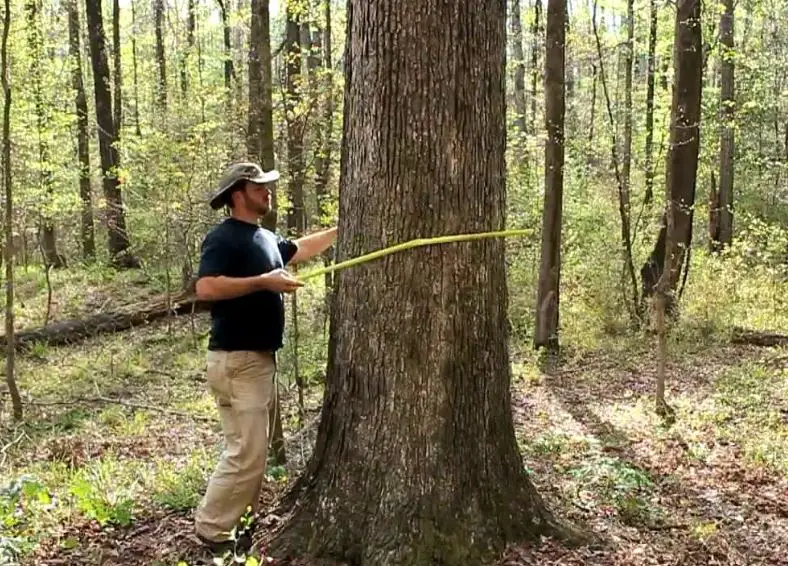A tree trunk is mainly composed of rings, one for each year of the tree’s existence, as most Americans discover when they are young. Although science mostly concurs with this, it does not provide a useful tree age calculator for living trees.
If you know when a tree was planted and its age at that time, determining its age is simple. Such data is often not accessible. A tree bore may be used to count the rings; however, doing so might harm the tree. Continue reading to learn how to determine a tree’s age without hurting it.

Tree Rings Age
Did you know that the study of tree ages is known as dendrochronology? It involves the analysis and dating of yearly tree rings. This lengthy phrase combines the following three terms:
- Ology, which is the study of
- Chronos is the Greek word for time, specifically for previous events and activities.
- Dendros, which is another word for tree growth rings
While dendrochronologists can count the rings on a stump, they often examine them on live, upright trees. To do this, they use a specialized drill to bore into the tree trunk and retrieve a piece of wood the size of a straw with a diameter of 4 millimeters. To avoid damage or illness, they also have the tools necessary to cover up this tree hole.
How to Calculate Age from Tree Rings
Dendrochronology states that each tree ring, representing one year, comprises two layers. Throughout the spring and summer growing seasons, one layer develops. This layer is often the thicker one and is of a light tint. The second layer, darker and thinner and indicates slower development, forms around the summer’s and autumn’s end.
Nevertheless, dendrochronologists do more than just count tree rings. To accurately date the trees, they cross-date the wood samples after giving each ring a particular year on the calendar.
How to Determine a Tree’s Age Without Drilling
Most individuals cannot access specialist tree drills for taking boot core samples. Also, they lack the expertise necessary to properly seal the wound. As a result, the typical gardener needs a new, less complicated method of determining a tree’s age.
Thankfully, there is a method for approximating a living, standing tree’s age. You must determine the diameter in inches of the tree trunk at 4.5 feet (1 m) above the ground. The diameter is then obtained by multiplying the value by 3.14, or pi. Diameter at breast height, or DBH, is what this is.
You multiply the DBH by the growth factor for the tree species to obtain the estimate. For cottonwood, this may be 2, while for shagbark hickory, it can be 7.5. American elm, Red oak, and green ash are all 4, red maple, black walnut, ironwood are all 4.5, and white oak, white birch, and black cherry are all 5. Linden and pin oak are all 3, river birch is 3.5, and redbud, dogwood, and redbud are all 7.
Your tree is 22 x 5, or 110 years old if it is a white oak with a 22-inch (56 cm) DBH. While it is an estimate, you may understand how old the tree is using this information.

